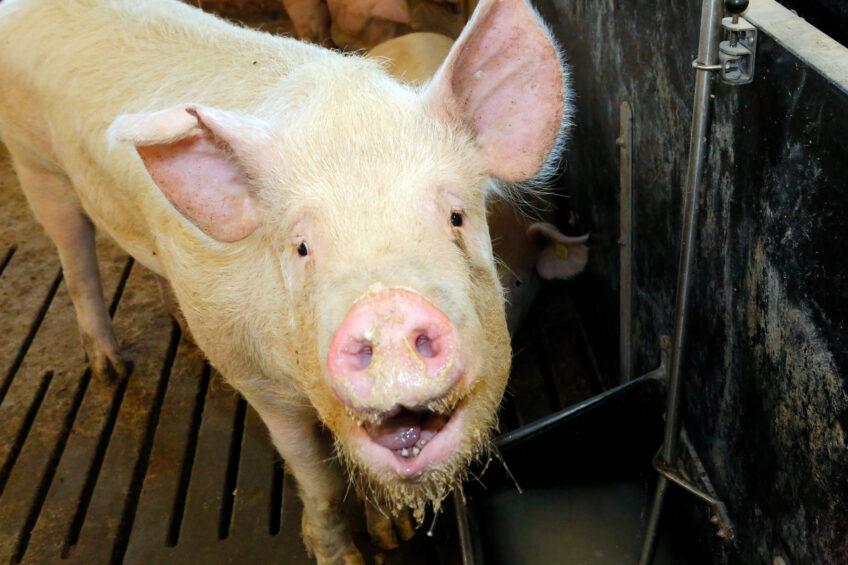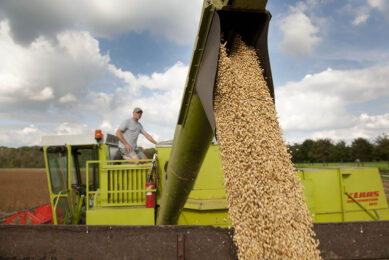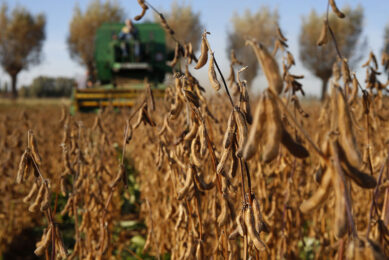The impact of more soybeans on US swine nutrition

It looks like soybean meal is going to become more present on the market – at least in US pig diets. That means that the market can expect some different considerations which need to be made, writes swine nutrition technology expert Dr Casey Bradley.
Imagine a world where soybeans are the superheroes of swine diets – well, that world is fast becoming our reality. With the expansion of soybean processing plants across the United States, driven by the skyrocketing demand for soy oil in biodiesel, we’re seeing an oversupply of soybean meal shaking up the swine nutrition arena.
Careful thought
As a swine nutritionist, this feels like being handed a new set of tools – exciting but also requiring careful thought. More soybean meal at a lower cost? Sounds great! But like any good plot twist, there’s more to the story. While this shift opens doors for new formulations, it raises concerns, particularly from amino acid suppliers scrambling to project their usage for the fourth quarter of 2024 and into 2025. The changes ahead could impact everything from protein balance to nitrogen efficiency and even the economics of enzyme use.
Let’s dive into what this means for our pigs, feed formulations, and how we can navigate the changing landscape with a steady hand and a sharp mind.
Increased soybean meal availability
As soybean meal becomes more abundant and affordable, its use in swine diets is increasing. This presents a unique scenario:
Supporting resilience
A growing body of evidence supports the use of higher levels of soybean meal in diets, particularly in pigs facing specific challenges like PRRS. The rich protein content appears to aid in maintaining resilience during these stressful periods.
Digestive concerns
However, in herds continually plagued with E. coli or in countries with zinc oxide restrictions, increasing soybean meal might not be beneficial. Managing protein levels carefully is crucial to avoid exacerbating digestive issues, especially under these conditions.
Shifting reliance on synthetic amino acids
With the rise in soybean meal availability, there’s a notable decrease in the use of synthetic amino acids in swine diets. While this can reduce feed costs, it also brings about broader industry implications:
Supply chain disruptions
The reduced demand for synthetic amino acids is causing concern among suppliers, who face challenges in projecting usage for the fourth quarter of 2024 and into 2025. This uncertainty could lead to supply chain disruptions and broader market instability.
Efficiency considerations
This shift may also raise concerns regarding nitrogen efficiency. The pigs’ ability to metabolise nitrogen effectively could be impacted, potentially leading to increased waste and environmental concerns.
Re-evaluating energy values
The US Soybean Board is backing research to reassess the energy benefits of soybean meal. This opens new opportunities but also poses challenges:
Impact on feed conversion
Revised energy values may impact feed conversion ratios (FCR). Historically, undervaluing energy might have provided some advantages, but as we correct these values, nutritionists may need to re-assess ME/NE:lysine ratios.
Cost-effectiveness of enzymes
The adjustment in energy credits could also influence the use of enzymes like protease, glucanase, or mannanase in swine diets. Evaluating their cost-effectiveness under these new conditions will be important.
Key considerations for swine nutritionists
- Balancing protein levels: While increasing soybean meal can be beneficial, managing protein levels is crucial to maintaining digestive health.
- Monitoring nitrogen efficiency: As synthetic amino acid use decreases, ensuring pigs remain efficient in nitrogen metabolism is essential to support sustainability efforts.
- Adjusting formulations: Be prepared to revisit ME/NE:lysine ratios and consider enzyme supplementation as we refine our understanding of soybean meal’s energy contributions.









